The Michael Tissera Interview – with Ravi Rudra (19.12.2023)
- What was the major turning point in your crcketing career?
“At school, I hardly scored runs consistently. Those days the school matches were played over two half-days and you looked to push the game along to get results. I got one only hundred while playing for College. The lack of big scores were more mental than technique.
However, in my first Sara trophy game for NCC (in 1958), which I was lucky to play because I was ill the whole week but captain Vernon Prins insisted that I play, I got a hundred against Saracens. That turned my whole career around. Following that century which gave me a lot of confidence I scored three or four centuries in that debut season and I got picked to play for Ceylon in December of that year against Peter May’s 1958 MCC team.”
- As a Junior at College, who would you give credit for refining your technique and shaping you into a top cricketer?
“Lassie Abeywardena without a question! He was an all-round coach who gave me so much confidence. So much so that even when I was playing Club cricket and if I was having a bad run I would turn up at U16 practice, inform Lassie and bat right at the end, and he would put me right. Lassie is someone who read a lot about the game. He was a very keen student of the game. Took a lot of interest and he knew his stuff.”
- You were picked to play 1st XI as a 14-year-old. How did that happen?
“I played U14, U16 and 1st XI… In cricket or for that matter in any sport, to be successful you need a little bit of luck! Funnily, I was in the boarding those days and I was playing tennis on the Warden’s court in a pair of shorts and tennis shoes when I got a message to say, ‘Come and bowl at the Small Clubs to the 1st XI team’ because they were playing St. Benedict’s in a couple of days’ time at Kotahena (on a matting wicket). This must have been on the Wednesday.
So I went and bowled and at the end of the session they said come tomorrow and be prepared to bat. I went the following day and I batted a little bit and on Friday I was playing in the side! I didn’t even have a pair of longs but fortunately I was able to borrow a pair from one of the dorm mates to wear for the game.
That’s how I played my first 1st XI game for College.”
- As a talented young tennis player you were part of very good teams at College that were Junior and Senior Public Schools Tennis Champions. Please tell me about your days as a tennis player.
“My whole family played tennis. My father was a planter on some upcountry estates & when I went for the holidays played at the club twice a week. At college, in the boarding we tended to play most games and tennis & hockey seemed to go with cricket.
I was not such a talented tennis player but I was fortunate to partner
G.N. Perera in the junior doubles and P.S. Kumara in the senior doubles at the public schools tennis meet & won both. They were responsible for my getting public schools tennis colours.”
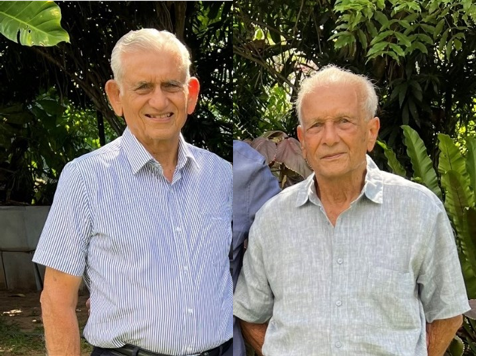
*Tissera Brothers – Michael with older brother Vernon at the Thomian (Over 65) Fellowship at SSC on 17 Dec 2023. Vernon played 1st XI back in 1949 as an opening bat scoring a solid 30 in the 70th Battle of the Blues. Vernon is currently the third oldest Thomian cricketer after Chandra Schaffter & Bradman Weerakoon.
- Were there any players that you looked up to as a youngster and said to yourself, ‘I want to be like them?’
“Keith Miller was a great favourite of mine at one stage and then Richie Benaud and then of course Sobers. All three were superb cricketers.”

- Who would you say that you really moulded your batting style on?
“I don’t think anybody. I never tried to copy or emulate anybody. I never thought I would play for the College 1st XI…I just went for practice. I didn’t think that I would play for NCC…I just happened to go for practice and that day they chose me. And I never thought I would play for Ceylon. I didn’t have that ambition…it all just happened.”
- You had the distinction of playing five years of 1st XI cricket (1954-58) for You could’ve played a record equalling Sixth year in 1959 but left College at the end of the 1958 season. Who were some of the outstanding Schoolboy cricketers you played with and against during that period?
“There were many, but the following come to mind: Lorenz Pereira, Michael Willie and Daya Sahabandu (Royal), Anurudda Polonowita, and Sonny Yatawara (Ananda), Chandrasiri Weerasinghe (Nalanda), Malsiri Kurukulasuriya and Nimal Maralande (Trinity), Ranjit Doranegama (St. Anthony’s), L. Ebert and L.R. Gunatilleke (Wesley), Anton Perera (St. Peter’s), Lovelyn P. Rayen (St.
Benedict’s) and for STC – Zack Cader, Dan Piachaud, Ronnie Reid, Denis Ferdinands, Lareef Idroos and Erol Lisk, who was a brilliant wicket keeper.”
- You were picked as a captain for the National team when you were quite Were you overawed by that or did you have any mentors who helped you?
“When I was appointed as Ceylon captain, I was 24 years. But I was okay with it. I had captained the College side for two seasons (1957 & 58) so I had some experience. Strangely, I captained Sri Lanka (Ceylon) before I captained my Club side.
- Were there lot of pressure captaining the Ceylon team given that you were mostly playing far more experienced teams?
“Not really. We were always the underdogs so it didn’t really matter!”.
- What was it like facing up to the really quick You didn’t have helmets or much protection to wear during your days?
“You certainly needed a bit of luck. I think facing up to those quick bowlers was just a matter of surviving for the first 20-30 minutes. You needed to get the pace of the wicket because they were so quick and we never practiced such bowling at any stage. The wickets were not covered in those days and the Oval wicket was always a green top! But it played beautifully once you were set.”

[*Wesley Hall used to bowl with a pace like fire – With one of the longest run ups in the history of the game, he bounded to the wicket – a sight of terror. Six feet three inches tall and proportionately wide, all of it sinew, he steamed in with the gallop of a long-jumper. His eyes bulged, teeth glinted, the characteristic crucifix flew ahead propelled by the hurtling pace. Finally came the leap accompanied by arms flailing about as in a cartwheel, and the ball was released at well over 90 miles per hour – Arunabha Sengupta]
“One other thing, one had to watch the ball right up to the bat and either duck or weave away from bouncers, or else one could get badly hurt.
Rudi Webster in his book ‘Winning Ways’ gives an account of the value of watching the ball, Rudi was mentor to the West Indies team during
the 1981/82 tour of Australia. It was the series in which Greg Chapell, one of the greatest batsman in the world, at that time, had a horrendous time, not scoring a
run in seven consecutive innings. Rudi seemed to know what his problem was but not going to tell him till the series was over.
After the last day of the tour Rudi spoke to Greg and asked him if he was watching the ball. Greg said yes but Rudi then asked him whether he was watching it right out of the bowlers hand. After a pause Greg said no and wondered as to how he could forget such a basic thing. Rudi suggested he try it in the nets and in the NZ tour soon to follow Greg scored plenty of runs.
Today, probably because of the protection of helmets, many batsmen seem to take their eyes off the ball.”
- Who would you rate some of the top bowlers that you faced worldwide?
“Wes Hall, Andy Roberts, Dennis Lillee and Jeff Thomson among the paceman. And of the spinners, definitely Derek Underwood. He got us on a wet wicket here on the Oval (March 1967) and we were 43 for 3 and all out for 60 odd. In the 2nd innings I got about 35 on a really bad wicket and I thought that was one of my best innings, especially against Underwood in those conditions. Derek was deadly on that tricky wet wicket… quick, got bounce and turned the ball sharply on that occasion. We were worried about being out for 60 but the English said don’t worry, in this type of condition plenty of county sides are out for 50 or 60 with Underwood on the other side.”
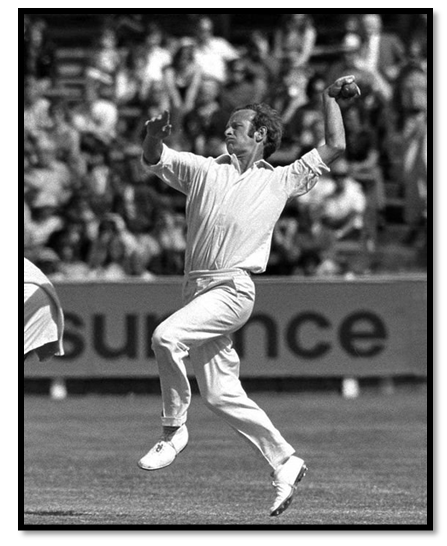
[*Deadly Derek Underwood had stunning match figures of 15 for 43 as he exploited a damp wicket to its best advantage].
- Daya Sahabandu seemed a similar type of bowler to Derek Underwood?
“Sahabandu was not as quick, but he’s a very accurate and a superb bowler. Ajit de Silva was another good bowler too. We had so many good spinners in our time …Fitzroy Crozier, Polonowita, Abu Fuard, Neil Chanmugam…”
- Was Neil Chanmugam a top spinner during his College days?
“Neil started by bowling seam at College but we had JKC Gunasekera and Denis Ferdinands in our side. However, we didn’t have an off spinner. So I said to Neil, ‘why don’t you try and bowl off spin’. And he took it on himself and was not coached…great fellow. Neil was a natural talent…. Idroos in school was also a superb bowler”.
- What’s your memory of PI ‘Ian’ Pieris?
“I have fond memories of Ian as a batsman hitting the ball over the sightscreen, and that 1953 Royal-Thomian he virtually won single-handedly. He got runs and he got wickets. Both Ian and Darell Lieversz could really swing the ball.”
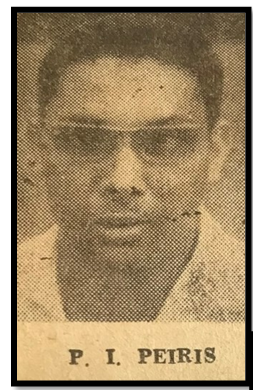
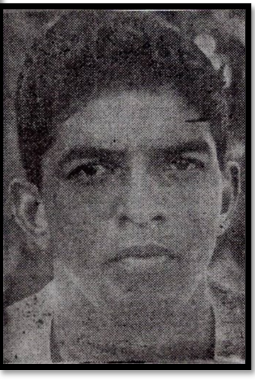 [*PI scored a scintillating 123 at the 1953 RT. Coming in with the score at 15/4 he put on a record 186 partnership for the 5th wicket with GLW Wijesinghe, and had a match-bag of 6 for 64 including 4 for 29 in Royal’s 2nd innings]
[*PI scored a scintillating 123 at the 1953 RT. Coming in with the score at 15/4 he put on a record 186 partnership for the 5th wicket with GLW Wijesinghe, and had a match-bag of 6 for 64 including 4 for 29 in Royal’s 2nd innings]
- Your impressions on Darrell Lieversz?
“Darrell was great! That Pakistan match was his debut and he bowled brilliantly and won us the match taking so many wickets. He bowled mainly in-swingers, but big in-swingers and I haven’t seen many local bowlers move the ball as much
as Darell did. Superb bowler.” [*Darrell Lieversz wrecked Pakistan with match figures of 9 for 68]
- Who stood out as top fielders during your time?
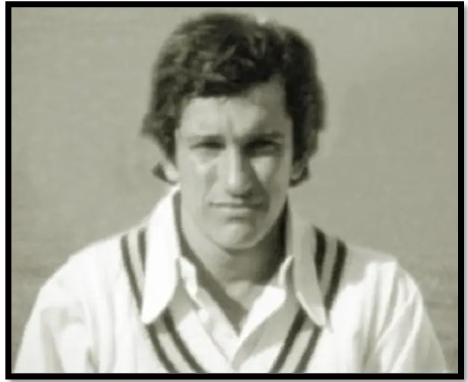
“David Heyn was outstanding
– mostly in the covers, while close in Anura Polonowita was very good in the gully.
HIK Fernando was probably the best wicket keeper I played with. Russel Harmer too was a very good keeper, but the poor guy couldn’t play because of HIK.”
- Michael, you and Anura Tennekoon were perhaps two of the unluckiest not to play any official Test cricket. Do you have any regrets about that?
“Not really. I would have liked to have played a Test match but no regrets. I enjoyed my cricket and I can’t grumble…if the time is not right what can you do about it?”
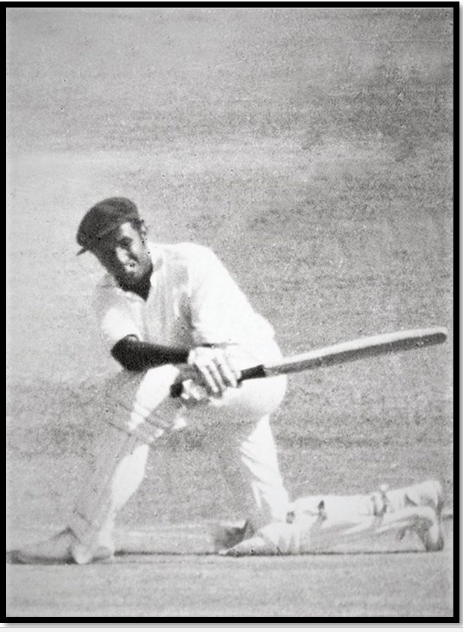
“However, I am very sorry about Anura not playing Test Cricket. I think he retired a little too early. He should have played in that inaugural Test in 1982. I don’t know why he suddenly decided to pack it in, because I would say he was one of our best Test players.
He was made for Test cricket.”
- What did you enjoy the most during your term with the MCC World Cricket Committee which was studded with several former International stars?
“Most enjoyed sitting with International stars and talking cricket while trying to solve some world cricket problems. I owe my position with MCC Cricket Committee to Tony Lewis who as Chairman of the MCC invited me to participate. Of course it was always a pleasure to visit Lords and watch the test matches from the committee room.”
- Sri Lanka cricket seems to be struggling at the moment. How would you assess the current situation?
“Basically I think that for some time there was no discipline. Some players suspended were brought back before the full period of recovery and that tends to give the impression that one is indispensable. This is not good for overall team discipline. The current players are talented, no doubt, but appear to lack experience and full commitment. Some seem to throw their wickets away too easily, perhaps because there is not enough competition for places. Hope that changes soon. Fitness is also a concern and an important factor in modern cricket. This need not be so as all the facilities and guidance are available these days. More dedication and pride in your cap will help.”
- In stark contrast we see as to how Indian cricketers are able to play all three formats of the game. Virat Koli is a classic example.
“Koli is simply outstanding! See how fit he is. Our chaps are simply not fit. Too many injuries, mostly our pace bowlers, but that I put down to them playing all three formats of the game. Test cricket is one thing and T20 is another in which every ball counts and you have to go flat out where fitness really matters.
Before the recent (2023) Cricket World Cup the team management had decided that fitness is a must. But they tried to get injured players fit overnight, which you can’t…you have to give them 3 or 4 months to properly recover and get fit. We ended up playing key players who were not fit and that was a disaster.”
- What advice would you give today’s young cricketers who aspire to excel at international level?
Three important things they need to develop.
- DISCIPLINE FITNESS 3. SKILL.
Also high levels of commitment, mental application and pride in your cap.
- The Sobers–Tissera Trophy is awarded to the winners of the Test series between West Indies and Sri Lanka. What are your special memories of Sir Garfield Sobers regarded as the ‘Greatest Cricketer’ – both on and off the field?
“I was doubly fortunate, not only to play against Sir Garfield but to get to know him personally when he was here to coach the SL team before the country’s first ever test match. He was here again on the invitation of the Sri Lanka Cricket Board to witness the West Indies vs SL test match and hand over the trophy, in our two names, to the winners. For me this was a huge honour to even have my name besides his. As a person he was friendly and down to earth despite being such a world star and kept us in awe listening to his fund of stories.
As a sportsman Sobers had a wonderful athletic physique and carried himself majestically on the field – all grace and elegance, so much so that watching him what came immediately to mind was, ”Here is a Champion.”
As a cricketer he was a captain’s dream – brilliant batsman, bowler in three styles and a wonderful fielder in any position but especially close in. He was indeed the incomparable all-round cricketer, the likes of which the world is unlikely to see again. As a fan and on behalf of all the cricket fans, I say thank you Sir Garfield for the many years of immense pleasure you have given us.”
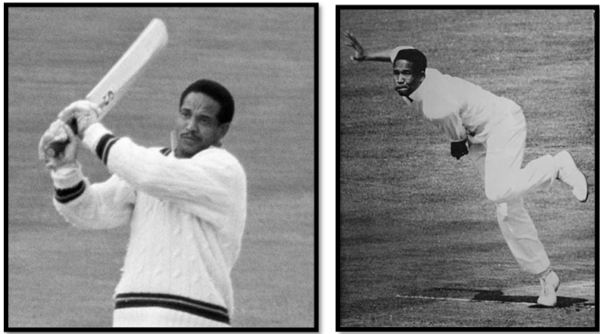
Garry Sobers an allrounder like no other – the only allrounder to score 300-plus runs and take 20 or more wickets in a Test series three times.
- What do you cherish the most – as a player, as an official, outside of cricket?
“Having played long there are many that come to mind. As a player being appointed captain of Ceylon in 1964.

FIRST WIN: Imtiaz Ahmed, Mr. Robert Senanayake, Tissera & Intikhab Alam
“Leading Ceylon to its first ever International victory against Pakistan, also in 1964. Winning the third unofficial test match against India in India in 1965 and participating in the first ever world cup in England in 1975.”
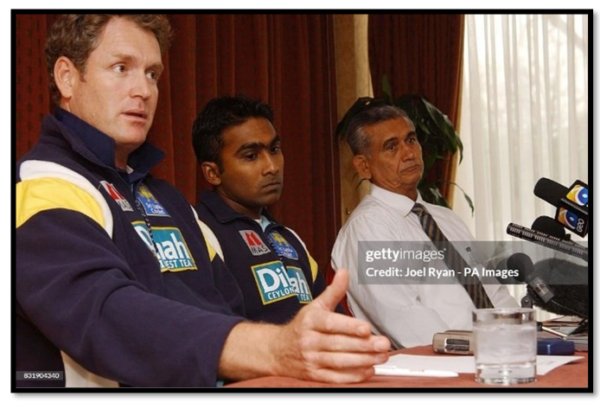
“As Manager, when SL won all five ODI’S against England in 2006 and thereafter when SL were runners up at the World Cup final in 2007.
“As a person, I am deeply honoured of being bestowed the title of Deshabandu by the President HE J.R. Jayewardene in the first ever ceremony of its kind in 1987 and then being presented the S. Thomas’ College, Lifetime Achievement award by the Warden in 2018.
The other highlights were being made Sportsman of The Year for cricket in 1961 and Sportsman of the Year again in 1969.”
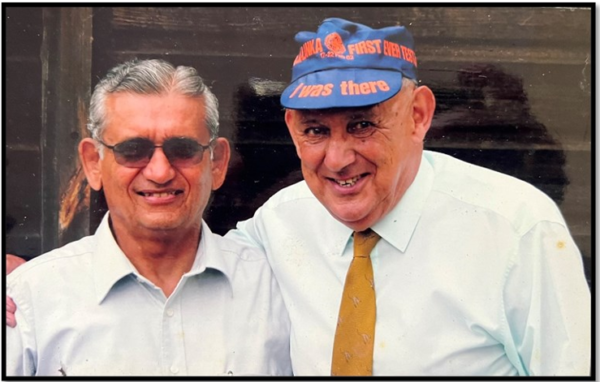
* England 2006 – Tissera with former England opener Raman Subba Row.
A Real Privilege & An Honour
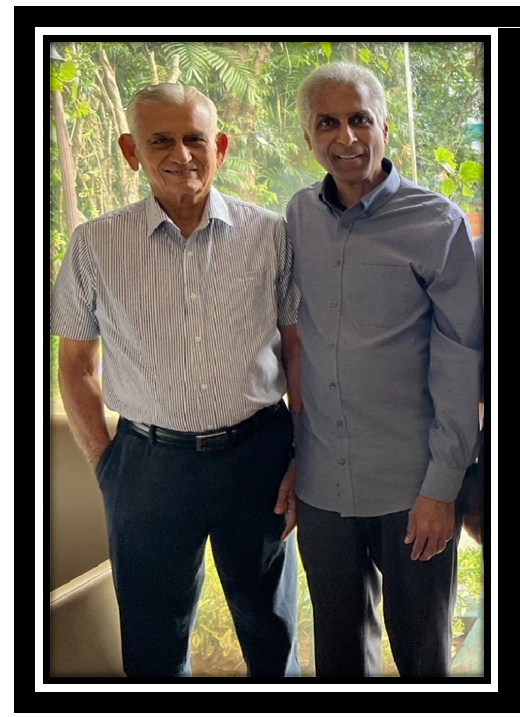
“THANK YOU MICHAEL” – Ravi Rudra







